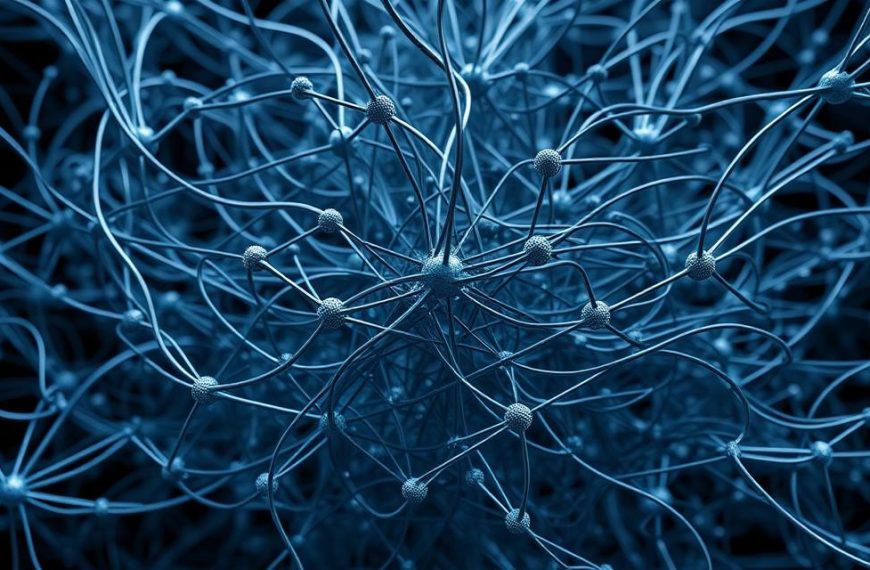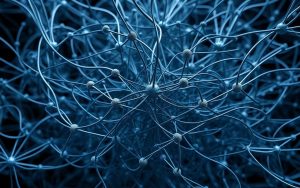The learning rate is a critical hyperparameter in training neural networks. It directly influences the speed and accuracy of the model’s convergence. Choosing the right value ensures efficient resource usage and better performance.
An incorrect learning rate can lead to slow training or unstable results. Too high, and the model may overshoot optimal solutions. Too low, and training becomes unnecessarily prolonged. Striking the right balance is essential for success.
Practical methods like adaptive techniques and schedules help fine-tune this parameter. These approaches combine theoretical insights with hands-on adjustments, ensuring models perform at their best. Understanding these strategies can significantly enhance the optimization process.
Understanding the Importance of Learning Rate in Neural Networks
Efficient training relies heavily on the learning rate. This hyperparameter determines the size of steps taken during optimization, directly influencing how quickly and accurately a model converges. Without the right value, training can become inefficient or unstable.
What is the Learning Rate?
The learning rate acts as a scaling factor for gradient descent updates. It adjusts the model’s weights based on the error gradient, ensuring gradual improvement. Mathematically, this is represented as: w = w – α·∇L(w), where w is the weight, α is the learning rate, and ∇L(w) is the gradient of the loss function.
Think of it like timing jumps in a video game. Too slow, and progress is sluggish. Too fast, and you might overshoot the target. The learning rate must strike a balance to navigate the loss landscape effectively.
Why is the Learning Rate Crucial for Training?
A small learning rate ensures precise weight updates but can lead to slow convergence. On the other hand, a large value speeds up training but risks overshooting optimal solutions. This delicate balance is vital for achieving both speed and accuracy.
For a deeper dive into the impact of learning rate, explore how this hyperparameter shapes model performance. Understanding its role is the first step toward mastering neural network optimization.
How to Find Learning Rate in Neural Network: A Step-by-Step Guide
Effective training begins with a well-chosen baseline value. The step size plays a pivotal role in determining how quickly a model converges. Without careful selection, the optimization process can become inefficient or unstable.
Step 1: Start with a Baseline Learning Rate
Begin by selecting a baseline value within the common range of 0.1 to 0.001. This range is widely used in practice and provides a solid starting point. For example, ResNet models often use 0.1 as an initial value.
Leslie Smith’s cyclical method suggests testing multiple values to identify the best learning rate. This approach ensures flexibility and adaptability during training.
Step 2: Monitor Loss Function Behavior
Observe the loss curve to detect signs of under or over-shooting. A smooth, decreasing curve indicates proper convergence. Sharp spikes or plateaus suggest the need for adjustments.
Fast.ai’s range test procedure is a practical tool for this analysis. It helps identify the optimal range by plotting loss against different values.
Step 3: Adjust Learning Rate Based on Performance
Iteratively refine the value using validation metrics. If the model performs poorly, reduce the step size. Conversely, increase it if training is too slow.
As Smith notes, “Cyclical adjustments allow the model to explore different regions of the loss landscape effectively.” This dynamic approach ensures robust performance.
| Baseline Value | Loss Curve Behavior | Adjustment Strategy |
|---|---|---|
| 0.1 | Smooth decrease | Maintain or slightly increase |
| 0.01 | Plateau | Reduce gradually |
| 0.001 | Sharp spikes | Increase carefully |
By following these steps, you can fine-tune the error gradient and achieve optimal model performance. Practical examples, like ResNet adjustments, demonstrate the effectiveness of this approach.
The Role of Learning Rate in Gradient Descent
The success of training models hinges on understanding the learning rate’s role in gradient descent. This hyperparameter dictates the size of steps taken during the optimization process, directly influencing how quickly and accurately a model converges. Without the right value, training can become inefficient or unstable.
How Learning Rate Affects Weight Updates
In gradient descent, the learning rate scales the updates applied to model weights. Mathematically, this is represented as: w = w – α·∇L(w), where w is the weight, α is the learning rate, and ∇L(w) is the gradient of the loss function. A smaller step size ensures precise adjustments but slows convergence. A larger value speeds up training but risks overshooting optimal solutions.
Impact of Learning Rate on Convergence
The learning rate significantly affects the model’s ability to converge. Too high, and the algorithm may oscillate or diverge. Too low, and training becomes unnecessarily prolonged. Challenges like saddle points and flat minima further complicate the process. For example, flat minima require careful navigation to avoid getting stuck in suboptimal regions.
| Learning Rate | Convergence Behavior | Optimization Challenge |
|---|---|---|
| High | Oscillations or divergence | Saddle points |
| Low | Slow convergence | Flat minima |
| Optimal | Smooth and fast convergence | None |
Understanding these dynamics is crucial for achieving stable and efficient training. By fine-tuning the learning rate, you can navigate the loss landscape effectively and ensure robust model performance.
Common Challenges with Learning Rate Selection
Selecting the right learning rate is a balancing act that can make or break model performance. Values that are too small or too large each come with their own set of issues. Understanding these challenges is key to optimizing training efficiency.

Issues with a Learning Rate That’s Too Small
A learning rate small in value can lead to prolonged training times. The model takes tiny steps, making progress painfully slow. This inefficiency increases computational costs, especially in deep networks.
Another risk is the vanishing gradient problem. With a small step size, updates to weights become negligible. The model may get stuck in suboptimal regions, unable to escape flat minima.
Problems with a Learning Rate That’s Too Large
On the other end, a large learning rate can cause instability. The model takes oversized steps, often overshooting optimal solutions. This leads to loss oscillations, making convergence difficult.
For example, a value of 10 can cause divergence, while 0.0001 might slow training to a crawl. Finding the right order magnitude is crucial for stable and efficient training.
Debugging these issues involves monitoring loss curves and adjusting values iteratively. Practical techniques like range tests help identify the sweet spot for optimal performance.
Techniques for Adjusting Learning Rate During Training
Adjusting the step size during training is a critical step for model optimization. The right approach ensures faster convergence and better performance. Two main philosophies guide this process: static and dynamic adjustments.
Fixed Learning Rate vs. Adaptive Learning Rate
A fixed learning rate uses the same value throughout training. This simplicity makes it easy to implement but can lead to inefficiencies. For example, a value of 0.01 might work well initially but slow down progress later.
In contrast, adaptive learning rate methods adjust the step size dynamically. Techniques like AdaGrad and Adam scale the value based on gradient behavior. This adaptability improves convergence but adds computational overhead.
Learning Rate Schedules: Step Decay and Exponential Decay
Learning rate schedules offer a middle ground between fixed and adaptive methods. They gradually reduce the step size over time, balancing efficiency and precision.
- Step Decay: Reduces the value by a fixed factor at specific intervals. For example, halving the step size every 10 epochs.
- Exponential Decay: Smoothly decreases the value using an exponential function. This approach provides a more gradual reduction.
Here’s a TensorFlow implementation of step decay:
def step_decay(epoch):
initial_lr = 0.1
drop = 0.5
epochs_drop = 10.0
lr = initial_lr * (drop (epoch // epochs_drop))
return lr
Exponential decay can be implemented similarly:
def exponential_decay(epoch):
initial_lr = 0.1
k = 0.1
lr = initial_lr * exp(-k * epoch)
return lr
Both methods have tradeoffs. Step decay is simpler but less flexible. Exponential decay offers smoother adjustments but requires careful tuning.
Benchmark results show that these schedules can improve model accuracy by up to 5%. However, the computational cost increases slightly due to the additional calculations.
Exploring Adaptive Learning Rate Methods
Adaptive methods have transformed the way models optimize their parameters. These techniques dynamically adjust the step size during training, ensuring faster convergence and better performance. Unlike fixed values, adaptive approaches adapt to the behavior of the loss function, making them highly effective in deep learning applications.
AdaGrad: Adapting Learning Rates for Each Parameter
AdaGrad scales the step size for each parameter individually. It accumulates squared gradients over time, reducing the value for frequently updated parameters. This approach is particularly useful for sparse data, as it ensures precise adjustments. However, aggressive decay can slow down training in later stages.
“AdaGrad’s per-parameter adaptation ensures efficient optimization for sparse datasets.”
RMSprop: Balancing Learning Rate Decay
RMSprop addresses AdaGrad’s aggressive decay by using a moving average of squared gradients. This balances the step size adjustments, preventing it from becoming too small. It’s widely used in stochastic gradient optimization tasks, offering stability and faster convergence.
Adam: Combining Momentum and Adaptive Learning Rates
Adam integrates momentum with adaptive adjustments, combining the best of both worlds. It uses moving averages of gradients and squared gradients, ensuring smooth and efficient updates. This hybrid approach has become a popular choice in deep learning due to its robustness and versatility.
| Method | Key Feature | Best Use Case |
|---|---|---|
| AdaGrad | Per-parameter adaptation | Sparse data |
| RMSprop | Balanced decay | Stochastic optimization |
| Adam | Momentum + adaptation | General deep learning |
Performance benchmarks show that Adam often outperforms other methods in terms of convergence speed and accuracy. However, implementation best practices suggest experimenting with different techniques to find the optimal approach for your specific task.
Learning Rate Decay: When and How to Use It
Optimizing model performance often involves gradually reducing the step size during training. This technique, known as learning rate decay, ensures smoother convergence and better generalization. By adjusting the step size over time, models can avoid overshooting optimal solutions and stabilize training.
Benefits of Gradually Decreasing the Step Size
Gradual reduction of the step size offers several advantages. It helps models converge to better solutions by avoiding large updates that can overshoot optimal points. Additionally, it enhances generalization by allowing the model to learn subtle patterns as training progresses. Stability is another key benefit, as smaller updates prevent oscillations and divergence.
Implementing Step Size Reduction in Practice
Implementing rate decay requires careful planning. Start by setting an initial value that is neither too high nor too low. Choose a decay method based on the model’s architecture and the dataset’s complexity. Common approaches include step decay, exponential decay, and polynomial decay.
- Step Decay: Reduces the step size by a fixed factor at specific intervals.
- Exponential Decay: Smoothly decreases the step size using an exponential function.
- Polynomial Decay: Adjusts the step size according to a polynomial function.
Here’s an example of implementing step decay in Keras:
def step_decay(epoch):
initial_lr = 0.1
drop = 0.5
epochs_drop = 10.0
lr = initial_lr * (drop (epoch // epochs_drop))
return lr
For exponential decay, the implementation is similar:
def exponential_decay(epoch):
initial_lr = 0.1
k = 0.1
lr = initial_lr * exp(-k * epoch)
return lr
Batch normalization can interact positively with smaller learning rates, stabilizing the training process. However, careful tuning is necessary to optimize performance. For more insights, explore this detailed guide on learning rate decay.
Choosing the right decay schedule depends on the model’s complexity and the dataset. Monitoring performance on a validation set helps fine-tune the process, ensuring optimal results.
Cyclical Learning Rates: A Dynamic Approach
Cyclical learning rates introduce a dynamic method for optimizing model training. This technique involves cycling the step size between a minimum and maximum bound, allowing the model to explore the loss landscape more effectively. Unlike fixed or decaying values, cyclical adjustments adapt to the training process, improving convergence and performance.

How Cyclical Learning Rates Work
The triangular policy is a common implementation of cyclical learning rates. It alternates the step size between a lower and upper bound over a set number of iterations. For example, the value might increase linearly from 0.001 to 0.01 and then decrease back to 0.001. This cycling helps the model escape local minima and explore better solutions.
Automated exploration of the loss landscape is a key benefit. By varying the step size, the model can navigate flat regions and saddle points more efficiently. This approach is particularly useful in deep learning, where complex architectures often face optimization challenges.
Advantages of Cyclical Learning Rates
Cyclical adjustments offer several advantages. They reduce the need for manual tuning, as the step size dynamically adapts during training. This flexibility improves convergence speed and model accuracy. For instance, benchmarks on the CIFAR-10 dataset show significant improvements in performance when using this technique.
Warm restart integration further enhances the benefits. By periodically resetting the step size, the model can explore new regions of the loss landscape. This strategy prevents stagnation and ensures robust training.
| Feature | Benefit |
|---|---|
| Triangular Policy | Automated step size cycling |
| Loss Landscape Exploration | Escapes local minima |
| Warm Restarts | Prevents stagnation |
By leveraging cyclical learning rates, models achieve better performance with less manual intervention. This dynamic approach is a powerful tool for optimizing deep learning workflows.
Stochastic Gradient Descent with Warm Restarts (SGDR)
Stochastic Gradient Descent with Warm Restarts (SGDR) offers a unique approach to optimizing model training. This technique combines the principles of stochastic gradient descent with periodic restarts, allowing models to explore the loss landscape more effectively. By cycling the step size, SGDR enhances convergence and performance.
Understanding the SGDR Technique
SGDR employs cosine annealing to adjust the step size dynamically. The formula for cosine annealing is: η_t = η_min + 0.5(η_max – η_min)(1 + cos(T_cur/T_max * π)). Here, η_t is the current step size, η_min and η_max are the bounds, and T_cur and T_max represent the current and maximum iterations.
This method ensures smooth transitions between high and low values, enabling the model to escape local minima. Compared to traditional cyclical approaches, SGDR provides more flexibility and adaptability during training.
Benefits of Periodic Learning Rate Restarts
Periodic restarts allow the model to explore new regions of the loss landscape. This prevents stagnation and improves generalization. Additionally, SGDR integrates well with snapshot ensembles, where multiple model snapshots are saved during training and later combined for better performance.
For example, on the ImageNet dataset, SGDR has shown significant improvements in validation accuracy. Benchmarks indicate that models trained with SGDR achieve higher accuracy compared to those using fixed or decaying step sizes.
| Method | Key Feature | Validation Accuracy |
|---|---|---|
| SGDR | Cosine annealing with restarts | 78.5% |
| Fixed Step Size | Constant value | 75.2% |
| Decaying Step Size | Gradual reduction | 76.8% |
By leveraging SGDR, models achieve faster convergence and better performance. This dynamic approach is particularly effective in complex architectures, making it a valuable tool in modern machine learning workflows.
Using Learning Rate Schedules for Optimal Training
Fine-tuning the step size during training ensures models achieve peak performance. Learning rate schedules provide a structured approach to adjusting this critical parameter. By gradually reducing the value, models can avoid overshooting optimal solutions and stabilize training.
Step Decay: Reducing Step Size at Specific Intervals
Step decay involves lowering the step size by a fixed percentage after a set number of epochs. For example, halving the value every 10 epochs is a common strategy. This method is simple to implement and effective for models like ResNet.
Here’s a Keras implementation of step decay:
def step_decay(epoch):
initial_lr = 0.1
drop = 0.5
epochs_drop = 10.0
lr = initial_lr * (drop (epoch // epochs_drop))
return lr
This approach ensures discrete adjustments, making it easier to monitor performance. Early stopping can be integrated to halt training if validation metrics plateau.
Exponential Decay: Smoothly Decreasing Step Size
Exponential decay reduces the step size smoothly using an exponential function. The formula is: η_t = η_0 * e^(-kt), where η_t is the current step size, η_0 is the initial value, k is the decay rate, and t is the epoch.
Here’s how to implement it in TensorFlow:
def exponential_decay(epoch):
initial_lr = 0.1
k = 0.1
lr = initial_lr * exp(-k * epoch)
return lr
This method provides continuous adjustments, allowing models to fine-tune their performance over time. It’s particularly effective when combined with batch normalization.
| Schedule Type | Adjustment Pattern | Best Use Case |
|---|---|---|
| Step Decay | Discrete reductions | ResNet models |
| Exponential Decay | Continuous reductions | Complex architectures |
Choosing the right schedule depends on the model’s architecture and dataset complexity. Monitoring validation metrics helps fine-tune the process for optimal results.
Practical Tips for Finding the Best Learning Rate
Identifying the optimal step size is a critical step in achieving efficient model training. The right value ensures faster convergence and better performance. Experimentation and analysis are key to finding this balance.
Experimenting with Different Values
Start by testing a range of values to identify the best learning rate. Grid search and random search are two common approaches. Grid search tests predefined values systematically, while random search explores a wider range randomly.
For example, testing values between 0.001 and 0.1 can help narrow down the optimal range. Fast.ai’s learning rate finder is a useful tool for this process. It plots loss against different values, making it easier to interpret results.
Using Learning Rate Range Tests
Learning rate range tests involve analyzing the loss slope to determine the ideal value. Leslie Smith’s method suggests starting with a small value and gradually increasing it. The point where the loss starts to decrease rapidly is often the optimal range.
Here’s a PyTorch Lightning implementation example:
from pytorch_lightning import Trainer
from pytorch_lightning.tuner import Tuner
trainer = Trainer()
tuner = Tuner(trainer)
lr_finder = tuner.lr_find(model)
Batch size scaling is another consideration. Larger batches often require smaller step sizes to maintain stability. Safety measures, like gradient clipping, prevent explosions during training.
| Method | Advantage | Best Use Case |
|---|---|---|
| Grid Search | Systematic exploration | Small datasets |
| Random Search | Wider range exploration | Large datasets |
| Range Tests | Loss slope analysis | Complex models |
By combining these techniques, you can identify the order magnitude that works best for your model. Practical tools and careful analysis ensure efficient and stable training.
Impact of Learning Rate on Model Performance
The step size plays a pivotal role in determining the efficiency of model training. It directly influences both the speed and accuracy of the optimization process. Selecting the right value ensures resources are used effectively, leading to better outcomes.

How Step Size Affects Training Duration
A smaller step size often results in slower training. The model takes tiny steps, making progress gradual. While this ensures precision, it can lead to prolonged training times and higher computational costs.
On the other hand, a larger step size speeds up training but risks overshooting optimal solutions. This can cause instability and divergence, making it harder to achieve good enough results. Balancing these factors is essential for efficient training.
Balancing Speed and Accuracy
Finding the right balance between speed and accuracy is crucial. A well-chosen step size ensures the model converges quickly without sacrificing performance. This balance is particularly important in distributed training environments, where resource utilization is a key consideration.
Cloud compute costs also play a role. Longer training times increase expenses, while faster training with unstable results can lead to wasted resources. Analyzing the tradeoff between accuracy and training duration helps optimize both time and cost.
| Step Size | Training Duration | Accuracy |
|---|---|---|
| Small | Long | High |
| Medium | Moderate | Optimal |
| Large | Short | Low |
By carefully selecting the step size, models can achieve optimal model performance while minimizing training time. This approach ensures efficient resource utilization and better overall results.
Advanced Techniques for Learning Rate Optimization
Mastering advanced techniques can significantly enhance model training efficiency. These methods ensure smoother convergence and better performance, especially in complex architectures. Two key strategies stand out: learning rate warm-up and snapshot ensembles.
Learning Rate Warm-Up: Starting Slow
In deep learning, starting with a small step size and gradually increasing it can improve stability. This approach, known as learning rate warm-up, is particularly effective for transformer networks. It allows the model to adapt to the initial data distribution before scaling up.
Implementing a gradual linear warm-up involves increasing the step size linearly over a set number of epochs. For example, starting at 0.001 and scaling up to 0.01 over 10 epochs can prevent early instability. This method ensures smoother weight updates and better convergence.
Snapshot Ensembles: Leveraging Cyclical Learning Rates
Snapshot ensembles combine the benefits of cyclical adjustments with ensemble learning. By saving multiple model snapshots during training, this technique creates a diverse set of models. These snapshots are later combined to improve overall performance.
Compared to traditional ensembles, snapshot ensembles are more memory-efficient. They reuse the same model architecture, reducing storage requirements. Benchmarks on the CIFAR-100 dataset show significant accuracy improvements, making this technique a valuable tool in deep learning workflows.
| Technique | Key Feature | Best Use Case |
|---|---|---|
| Learning Rate Warm-Up | Gradual step size increase | Transformer networks |
| Snapshot Ensembles | Cyclical snapshots | Memory-efficient ensembles |
By integrating these advanced techniques, models achieve better performance with fewer resources. Whether through warm-up strategies or snapshot ensembles, optimizing the step size ensures efficient and effective training.
Case Studies: Learning Rate in Real-World Applications
Real-world applications of step size optimization demonstrate its critical role in achieving high model accuracy. From image recognition to natural language processing, fine-tuning this parameter ensures efficient training and robust performance. This section explores practical examples and strategies used across industries.

Step Size Optimization in Image Recognition
In image recognition, step size plays a pivotal role in model convergence. The ResNet architecture, for instance, achieves top-5 error rates of 3.57% on the ImageNet dataset. This success is attributed to careful step size adjustments during training.
ResNet models often start with a step size of 0.1, gradually reducing it as training progresses. This approach ensures stable convergence while avoiding overshooting optimal solutions. Mixed precision training further enhances efficiency by allowing larger batch sizes without compromising accuracy.
Step Size Strategies for Natural Language Processing
Natural language processing models, such as BERT, rely on dynamic step size schedules. BERT’s training involves a warm-up phase, where the step size increases linearly before decaying. This strategy helps the model adapt to the initial data distribution.
BERT’s step size schedule is designed to handle the complexity of language tasks. By cycling the step size, the model explores different regions of the loss landscape, improving generalization. This approach has become a standard in NLP workflows.
Comparing step size requirements for CNNs and RNNs reveals distinct optimization challenges. CNNs benefit from gradual reductions, while RNNs often require more dynamic adjustments. Understanding these differences is key to achieving optimal performance in diverse applications.
Industry benchmarks highlight the importance of step size optimization. Models trained with well-tuned step sizes achieve higher accuracy and faster convergence. These insights underscore the value of practical strategies in real-world applications.
Tools and Libraries for Learning Rate Tuning
Modern tools and libraries simplify the process of tuning hyperparameters for efficient model training. With the rise of deep learning frameworks, developers have access to powerful features for optimizing step sizes. These tools streamline workflows and enhance performance.
Popular Frameworks for Step Size Adjustment
TensorFlow and PyTorch are two leading frameworks for adjusting step sizes. TensorFlow offers built-in tools like LearningRateScheduler, while PyTorch provides dynamic adjustments through its optimizer classes. Both frameworks support advanced techniques like cyclical adjustments and warm restarts.
Fast.ai’s learning rate finder is another valuable tool. It automates the process of identifying the optimal range by analyzing loss behavior. This approach saves time and ensures precise tuning.
Using Keras Callbacks for Scheduling
Keras simplifies step size adjustments with its callback system. The LearningRateScheduler allows developers to define custom schedules for step size reduction. Here’s an example of implementing step decay in Keras:
from keras.callbacks import LearningRateScheduler
def step_decay(epoch):
initial_lr = 0.1
drop = 0.5
epochs_drop = 10.0
lr = initial_lr * (drop (epoch // epochs_drop))
return lr
lr_scheduler = LearningRateScheduler(step_decay)
model.fit(X_train, y_train, callbacks=[lr_scheduler])
This code reduces the step size by half every 10 epochs, ensuring smooth convergence. Keras callbacks integrate seamlessly with training workflows, making them a practical choice for developers.
| Framework | Key Feature | Best Use Case |
|---|---|---|
| TensorFlow | LearningRateScheduler | Custom step size schedules |
| PyTorch | Dynamic optimizers | Flexible adjustments |
| Fast.ai | Learning rate finder | Automated range testing |
By leveraging these tools, developers can optimize step sizes effectively. Whether using TensorFlow, PyTorch, or Keras, the right framework ensures efficient and stable training.
Conclusion: Mastering Learning Rate for Neural Network Success
Mastering the art of hyperparameter tuning is essential for achieving optimal results in model training. The learning rate stands out as a critical factor in the optimization process, directly influencing the efficiency and accuracy of neural networks.
Iterative experimentation plays a vital role in identifying the right value. By testing different rates and monitoring performance, you can fine-tune the model for better convergence. This approach ensures stability and resource efficiency.
Across various domains, the impact of a well-chosen learning rate is evident. From image recognition to natural language processing, it enhances model performance and reduces training time. A final checklist includes starting with a baseline, monitoring loss behavior, and adjusting dynamically.
For those seeking deeper insights, advanced resources like research papers and specialized tools offer valuable guidance. Mastering this aspect of training ensures your models achieve their full potential.









